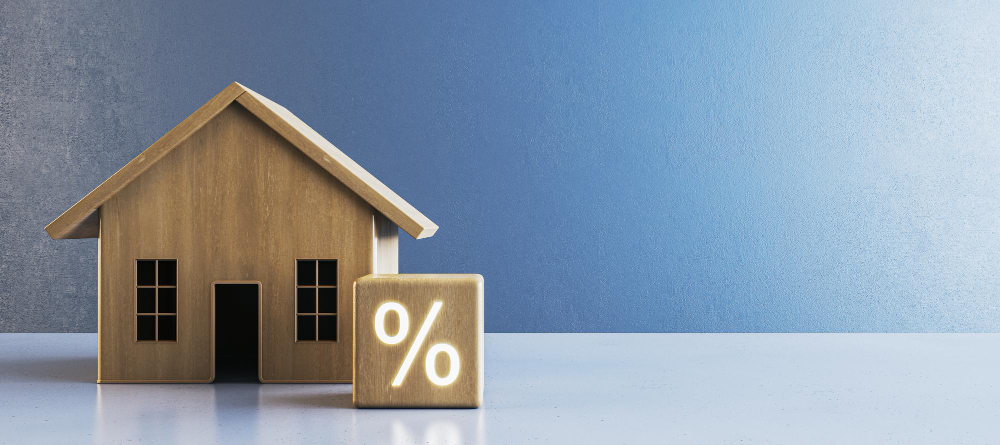
How to Insure Your Engagement Ring
Beyond its financial worth, an engagement ring symbolises commitment and love, making it priceless in sentimental terms. Protecting it against accidental damage, loss or theft is essential to avoid unexpected costs. In most cases, this cover is included within contents insurance, but only up to certain limits. For high value jewellery, like many engagement rings, you may need to specify the item on your policy or consider high value contents insurance to ensure full protection whether at home or when worn outside.
In the UK, the average cost of an engagement ring in 2024 to 2025 is typically between £1,900 and £2,200. However, higher value rings and other significant valuables often exceed this amount, making specialist cover essential.
rivr’s high value contents insurance covers total contents up to £500,000 and protects individual valuables up to £250,000, giving you peace of mind if your ring or jewellery collection is properly protected beyond standard limits.
Read on to learn how to insure your engagement ring properly, what to check in your policy, and practical steps to ensure it stays fully covered for any unexpected loss or damage.
What does engagement ring insurance cover?
Engagement ring insurance protects your ring against common risks at home and abroad. A typical policy covers:
- Accidental damage, such as a chipped stone or bent setting
- Accidental loss, for example if the ring slips off unnoticed
- Theft, whether at home or while travelling
- Mysterious disappearance, if the ring goes missing without a clear cause
- Repair or replacement, up to the full value shown on your valuation certificate
- Worldwide cover, so your ring stays protected wherever you go
This level of cover ensures that, if your wedding and engagement rings are lost, stolen or damaged, you will not face unexpected costs to repair or replace it.
Does my home or contents insurance cover my engagement ring?

Many people rely on standard home cover to protect their engagement rings. This usually provides basic loss cover for precious items inside the home but often comes with a single-item limit, typically between £1,500 and £2,500. If your ring is a high value item or you travel frequently, you may need specialist insurance so it is properly covered for accidental damage, theft, or if it is accidentally lost.
Specialist contents insurance can cover multiple valuables with higher total limits and fewer exclusions for high risk or sentimental items. It often includes worldwide cover, giving you confidence your ring is protected whether you’re at home or abroad.
If your ring is a high value item (for example, worth more than £25,000) or if you own a collection of jewellery and other precious possessions, rivr’s high value contents insurance can help ensure everything is properly protected worldwide, up to your chosen total contents limit.
How does engagement ring insurance work?
Engagement ring insurance protects against accidental damage, theft or loss. Some policies also cover mysterious disappearance, meaning you are protected even if you do not know exactly when or how the loss occurred.
Many insurers recommend adding personal possessions cover if you want your ring protected when worn outside the home. An up-to-date professional valuation is essential to ensure you receive the correct replacement value if you ever need to claim.
Should you add my engagement ring to my home insurance or get specialist cover?
You can insure your engagement ring in two main ways: by adding it as a specified item to your home insurance policy or by taking out a standalone specialist jewellery insurance policy.
If your ring is high value or you want broader protection, a dedicated jewellery policy is usually a better choice. It often includes worldwide cover, accidental loss protection and fewer limits than standard home insurance.
How are claims handled for engagement rings?
If you need to make a claim, you will usually need to provide a recent valuation certificate, proof of ownership such as a receipt or invoice, and a police report if the ring was stolen. Many insurers require these documents to confirm the ring’s value and ownership before settling a claim.
Some engagement ring insurance policies come with a zero excess for claims. so you may not need to pay anything when claiming. Insurers may offer a replacement or a cash settlement, although cash payouts often reflect trade prices rather than retail costs.
UK regulations require insurers to explain these terms clearly and to settle claims fairly at replacement value.
How much does standalone engagement ring insurance cost?
According to industry averages and UK jewellery insurance brokers, these are typical annual costs for standalone cover.
What factors influence the cost of your policy?
The cost of your engagement ring insurance depends on several factors:
- Ring value and purchase price: Both the original purchase price and the current valuation affect how much you pay for insurance. Premiums for specialist jewellery insurance usually range from 1% to 3% of the ring’s value each year.
- Most providers have a minimum annual premium, typically £100 to £130, plus administration fees and insurance premium tax. For lower-value rings, this means the percentage cost can be higher than 1%.
- Location: Your postcode can affect your premium because some areas have a higher risk of theft or loss.
- Claim history: If you have made previous claims on jewellery insurance, you may pay more. Some insurers add extra charges for customers with a history of claims.
- Policyholder age and cover level: Some insurers adjust prices based on age. The level of cover you choose will also affect your premium. High-value rings may need higher limits.
- Multiple items: You can insure several pieces of jewellery under one policy, but this increases the total premium. Some home insurance policies include cover for new jewellery if you report it within a set time, usually 60 days.
-
How do I choose an engagement ring policy?
Choosing the right policy starts with knowing exactly what you need covered.
- Assess your needs: Consider the value of your ring, where you want cover (at home and abroad), and whether you have any special requirements such as safe storage for high-value jewellery. If your ring is custom-made, include the cost of craftsmanship when working out its full value.
- Compare providers: Get quotes from different insurers, including home insurance add-ons and specialist jewellery policies. Choose providers regulated by the Financial Conduct Authority (like rivr) and check their firm reference number. Some insurers specialise in policies for fine art, antiques, and high value jewellery, so compare to find the best fit.
- Check policy details: Read the terms carefully. Look for limits, exclusions and conditions such as safe storage rules for items over £10,000. Most policies cover the physical loss of stones, but some may exclude cosmetic damage like scratches or general wear and tear. Some insurers also ask you to get your ring’s settings checked regularly by a jeweller to prevent loose stones and maintain full cover.
- Ask about discounts: Some insurers offer lower premiums if you use secure storage or unique identification methods for your jewellery. Check if updated valuations can also help you qualify for a better rate.
Taking a few minutes to compare options and read the small print will help you choose a policy that truly protects your ring’s full value.
Why is it important to get your jewellery valued and revalued?

This helps ensure your ring is fully covered in the event of a claim. If you under-insure it, you may not receive the full cost of repair or replacement, which could leave you out of pocket.
It’s best to get your diamond ring or wedding ring revalued every two to three years. This is because the value of precious metals and gemstones can change over time. This keeps your insurance up to date with its true market value.
You can get a professional valuation from a reputable local jeweller or the store where you bought your ring. Make sure the certificate includes a clear description of the stone quality, size and setting.
Steps to insure your engagement ring
Follow these simple steps to make sure your ring is protected properly:
- Get a professional valuation: Arrange a recent, accurate certificate confirming the full replacement value
- Decide how to cover it: Check if your home insurance can list it as a specified item or if you need a separate jewellery policy.
- Compare quotes: Get quotes from different insurers and check their Financial Conduct Authority firm reference number.
- Check the details: Read the policy documents carefully to understand cover, exclusions, excess and settlement options.
- Keep your documents safe: Store your policy, valuation certificate and receipts securely. Keep digital copies so you can claim easily if needed.
How to make a claim
If you ever need to make a claim for your engagement ring, contact your insurer as soon as possible using the details in your policy or online account.
In the event of a claim, be ready to provide:
- A recent valuation certificate
- Proof of ownership, such as a receipt or photos
- A police report if the ring was stolen
- Any other details about how the loss or damage happened
For high-value claims, an insurer may appoint a loss adjuster to check details and settle fairly. Most claims are resolved quickly once all information is provided.
Tips for maximising your cover
- Keep valuations up to date for jewellery and precious items.
- Store your ring securely to reduce theft cover claims and avoid a break in.
- Understand policy exclusions and what’s not covered, such as cosmetic damage or general wear and tear.
- Choose a specialist provider for high-value rings and wedding rings.
- Document ownership and condition for all sentimental items and valuable items.
Conclusion
Whether you choose to add your ring to your home insurance policy or opt for standalone cover, it’s essential to ensure you’re fully protected against loss, theft, and accidental damage.
By following the steps in this guide, getting a professional valuation, comparing providers, and understanding your policy, you can feel confident your engagement ring is fully protected. Don’t wait until it’s too late; review your options today and make sure your ring is covered for every eventuality.
rivr: cover for those with more to protect

rivr is a digital-first insurance provider specialising in high-value homes and precious possessions. Our service is designed around you, offering tailored cover that fits your lifestyle. As part of this, we provide comprehensive contents insurance with worldwide protection against loss, theft and accidental damage, giving you confidence that your engagement ring is safeguarded wherever you go.
If you would like to discuss your requirements in more detail, our experienced team is always available to provide tailored guidance.
Rivr Cover Limited is an Appointed Representative of Innovative Risk Labs Ltd, which is authorised and regulated by the Financial Conduct Authority (FCA), FRN 925873. rivr Cover Limited’s FRN is 1000665. You can check these details on the Financial Services Register by visiting www.fca.org.uk.
Read more
Frequently asked questions
We recommend updating valuations every two to three years, or sooner if you change a setting, add stones, or notice major price shifts in gold or diamonds. This keeps your sums insured accurate and avoids underinsurance. Rivr requires valuations for items over £25,000.
Rivr includes engagement rings under contents cover, with single-item limits up to £250,000 when specified. This provides much broader protection than standard policies, which often limit jewellery to a few thousand pounds.
Engagement ring insurance typically covers accidental loss, theft, and damage. Some policies also include gemstone loss (for example, a diamond falling out of its setting). Always check your policy schedule to confirm your limits and exclusions.
Report the loss or theft to the police within 24 hours and get a crime reference number. Then contact rivr’s claims team and provide supporting documents such as valuations, photos, or receipts. Prompt reporting helps process your claim quickly.





